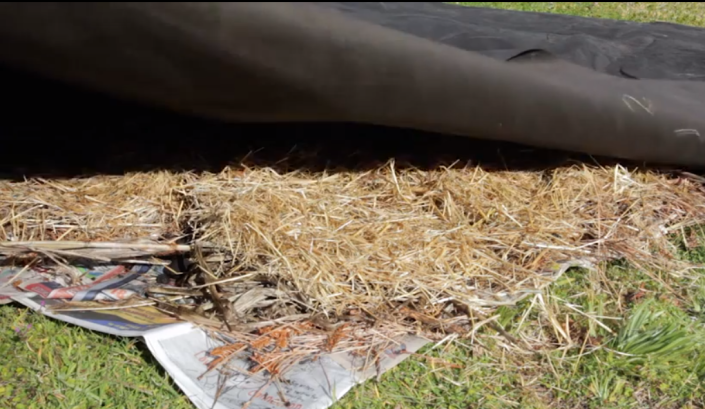Source: gardeningchannel.com
Published: January 14, 2016

By Julie Christensen
Maybe you’re the type of gardener who loves spending hours in the garden – tilling it in the spring and weeding and watering it through the rest of the summer. Perhaps you have a flexible work schedule and children who make their own meals, do their own laundry and clean up after themselves without being asked. If so, lasagna gardening probably isn’t for you.
If, though, you’re like the other 99 percent of gardeners, then you’re hanging on by the skin of your teeth, trying to do it all. You might start the gardening season with plenty of enthusiasm, but by mid-July, the heat and your hectic schedule have dimmed your passion for pulling weeds. If this scenario sounds more like you, you’ll love lasagna gardening (also called sheet mulching or “no dig” gardening).
Patricia Lanza first introduced the concept of lasagna gardening in her 1998 book, Lasagna Gardening: a New System of Layering for Bountiful Gardens. A busy mother of seven children and an inn owner, she simply didn’t have time to care for her vegetable garden using traditional techniques. Over several years, she developed a gardening strategy that reduced the time spent weeding, watering and tilling by at least 60 percent. Below, you’ll find step-by-step instructions for getting started:
1) To establish a new garden area, lay black and white newspaper or cardboard over existing vegetation, including weeds and grass. Wet these materials thoroughly with a hose. This will smother the plants already there and keep new weeds from coming up.
2) Gather materials for your lasagna garden. You’ll need lots of “brown” materials, such as peat moss, straw, wood chips, dry leaves, shredded office paper, sawdust or newspaper. These ingredients are dry and decompose quickly. They’re usually bulky, ensuring light, oxygen-rich soil. You’ll also need “green” materials. If you’ve composted before, you know that green materials are nitrogen-rich matter that is dense and moist. Green materials include compost, manure, untreated grass clippings, animal bedding, yard waste, vegetarian kitchen waste, coffee grounds, seaweed and blood meal.
3) Start layering your lasagna garden by alternating 5-inch layers of brown material with 3-inch layers of green material. Top the garden bed off with 5 inches of garden soil. Although you can build a lasagna garden any time of the year, fall is the best time. Materials, such as dried leaves, are plentiful at the end of the gardening season and by starting the garden in the fall, you allow time for the soil amendments to break down and blend together.
4) When spring arrives, it’s planting time. There’s no need to till a lasagna garden because its layers guarantee a soft, pliable growing medium. Simply plant your seeds, water and you’re ready to go.
5) Once seedlings emerge, spread a 6-inch layer of weed-free straw over the garden surface. The straw breaks down over time, adding even more organic matter to your soil. In the meantime, though, it conserves water and keeps weed growth down. Although weed-free straw doesn’t contain weed seeds, it often contains barley or wheat seeds, which germinate and grow as grasses. To deal with these, simply turn the straw over, which smothers them.
6) Every fall, add a few more layers to your lasagna garden for soil that becomes richer as the years go by.
The point of the lasagna garden is to simplify your life by using natural, organic methods, but the above method is merely a starting point. Experiment to find the method that works best for your gardening situation. Don’t go to great lengths to acquire materials for the layers. Simply use what you have in your yard or close at hand.
Although lasagna gardening can work on a large, traditional garden, most lasagna gardeners make raised beds with paths running between them. Raised beds can be as simple as raised mounds of soil, or as permanent as frames made with wood, rock or cinder block. To make paths, simply lay cardboard where you want the paths, wet it well and mulch with wood chips or gravel.
Finally, lasagna gardening and good water conservation strategies go hand in hand. If you use overhead sprinklers, some of the water will run off the straw mulch. Lay soaker hoses underneath the straw mulch instead. The water goes directly to plants’ roots and the straw mulch prevents evaporation.
To learn more about lasagna gardening, visit the following links:
Lasagna Gardening from Mother Earth News
GrowOrganic.com also has a great video covering the basics of no till lasagna gardening.
